Last year’s model had a tight midfoot fit with the medial stitched-on tape rubbing against the foot. None of that is experienced on the Inspire 12. The tongue padding level hasn’t changed, so all of the fit improvement comes from cleaning up the inner sides.
Like many Mizuno’s, the Inspire 12 has an extremely broad tongue, which keeps it from sliding sideways despite the lack of a sleeve. And how exactly does a wide tongue help?
Tongue slide happens when it moves into the empty space between the foot and the upper during runs. A wide tongue fills up the gaps beforehand, so there’s no sideways space for the tongue to slide. Hence, it stays put, more or less.
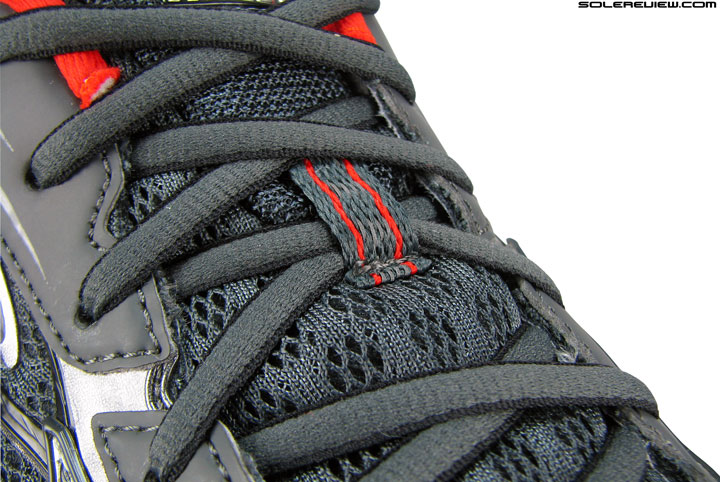
This is a welcome change. Last year’s Inspire 11 had terrible laces, and the Inspire 12’s smoother+softer laces makes amends.
The new laces are so much better on the Inspire 12. They feel extremely smooth and soft to the touch, and have a bit of an elastic quality to them. The heel portion fits identical to the Inspire 12, no change there.
Coming to think of it, the heel fit experience is very similar across most Mizuno models, be it the Creation, Prophecy, Inspire or Rider. All of these adopt a similar approach to counter molding, padding and choice of material, with predictable results.
Reflectivity isn’t much of a thing on any of the Mizuno shoes. There’s a microscopic Runbird logo on the heel which happens to be reflective, which is good as not having any.

This is how Mizuno makes its shoe a ‘support’ type. Mellow Wave design on the outer side, and higher ‘waves’ on the inside.
Mizuno has an entirely different approach towards interpreting the motion control or stability shoe concept. Instead of inserting a medial post made of harder foam in its midsoles, it simply alters the design of its wave plate.
On the lateral side, the Wave plate has mellow profile with a gentle wave shape. On the medial side, the Wave design turns much more aggressive, featuring exaggerated troughs and crests. This is meant to make the inner midsole much more resistant to compression, and thus turning it into a motion control design feature.
It wasn’t always like this. Around 20 years ago, Mizuno had a quite a few shoes with traditional medial posts. Like the 1997 Mizuno Mondo Lite or Sumo Trainer, both of which had firmer, dual density midsoles. A year later, Mizuno released the 1998 Wave ST, along with another traditional dual density running shoe called the Mizuno Stratus.
Over time, Mizuno has stuck to using the Wave Plate, variating its use to accommodate models from the neutral and support category. So in terms of design execution, the Inspire 12’s wave insert is the same as the Inspire 11’s treatment. Ok, as a standalone component the two Wave plates aren’t exactly the same, and one will discern minor differences in the molding detail.

The Inspire 12 (top) has a foam lining (yellow) below the insole. This wasn’t so on the Inspire 11, which had a fabric based lasting.
A casual glimpse might not reveal much, but the truth is that the Inspire 12 comes factory assembled with a slew of new updates. Lift the removable insole, and you’ll notice that the fabric lasting of the Inspire 11 is substituted with a foam kind.
The insole itself does not change. It is still soft molded foam, and the textile covering still comes with the luxurious hand feel recognizable by Mizuno loyalists.
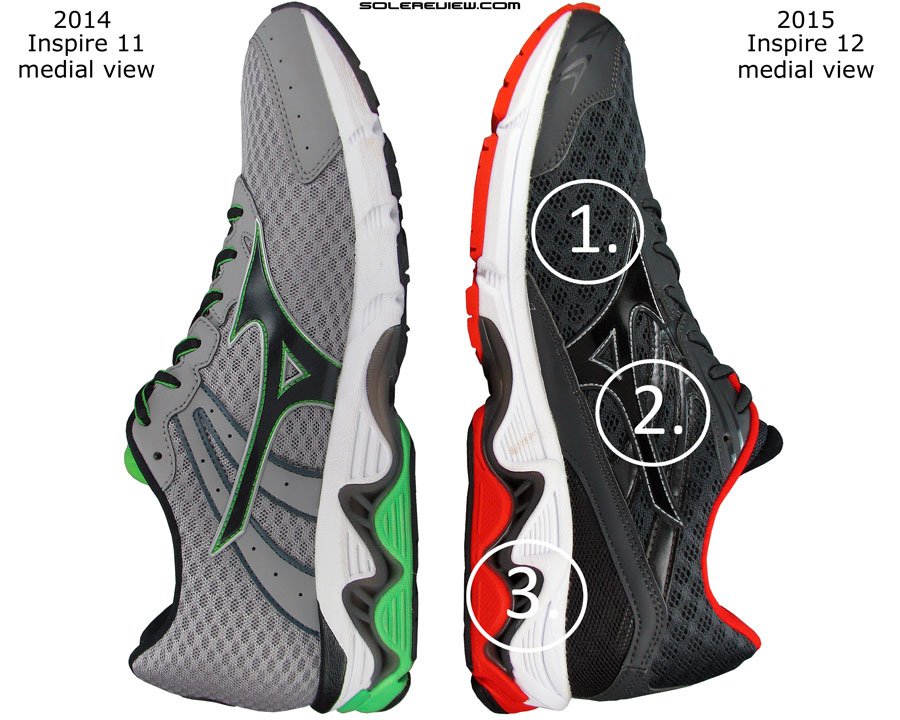
1) Medial side forefoot fits the same 2) Midfoot fit feels better 3) Near identical Wave plate, yet as not as responsive as the Inspire 11
The Wave plate is sandwiched between two layers of foam; the white midsole on top, and a colored lining beneath it. The red colored foam below the Inspire 12’s wave plate is much softer, while the upper white foam has firmed up, but not by much.
The softer red foam gets a new name, changing from last year’s combination of ‘SRtouch’ and U4ic to ‘U4icX’. Nonetheless, both are just compression molded EVA foam variants. By the way, U4ic is an abbreviated word-play on ‘Eu-phor-ic’.
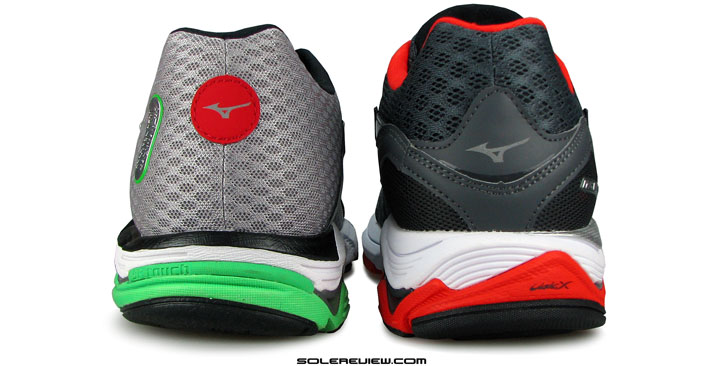
There’s a change in how the two foam densities are stacked together. On the Inspire 12 (right), there’s more of the firmer foam on the inside.
The Inspire 12 modifies its foam stacking arrangement around the heel center. On the Inspire 11, the heel had a relatively evenly stacked design.
The latest Inspire 12 borrows from the Asics Kayano 22/Nike Lunarglide 5, diagonally stacking the soft and firm foam layers. There’s more of the firmer white foam visible on the medial side.
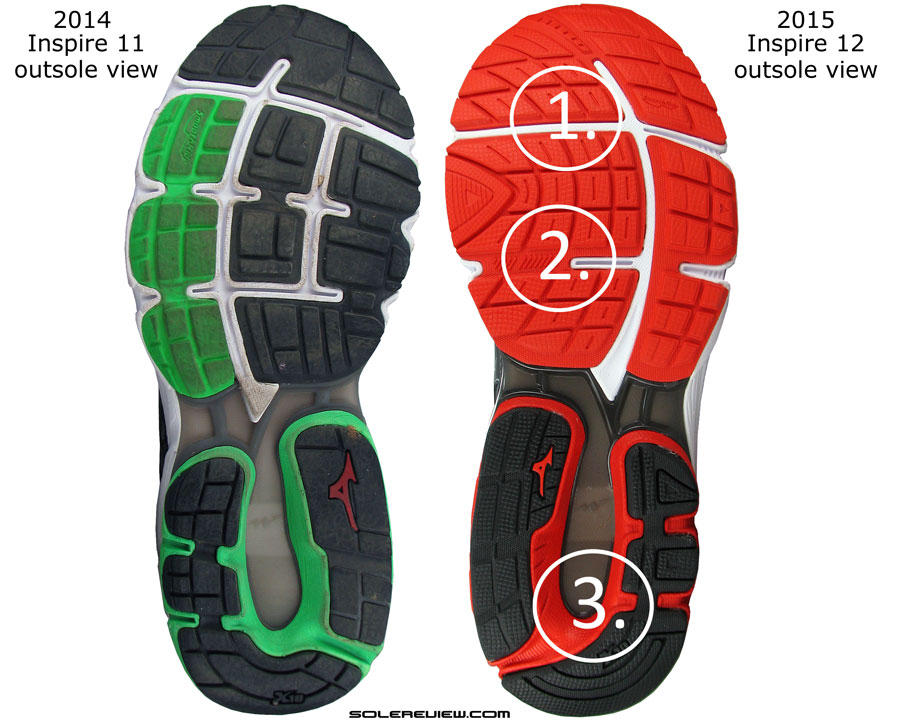
1) Lesser number of flex grooves 2) Larger slabs of rubber instead of smaller ones 3) Lower part of the heel is softer due to change in foam (red) density.
A lot happens under the Inspire 12’s forefoot. The outsole is still softer blown rubber, yet the geometry changes quite a bit. The Inspire 11 had three flex grooves and smaller pieces of rubber mounted on EVA foam, separated by generously exposed channels.
The Inspire 12 switches to larger outsole slabs, cuts down on one flex groove and actually increases the rubber thickness. This is another area responsible for the Inspire 12’s weight increase, along with the strobel switch and additional upper layering.
The rear-foot outsole retains the use of harder X-10 rubber in a horse-shoe shaped layout, and like the Inspire 11, rear-foot strikers will find the shoe noisy on harder surfaces.
And what does all of these changes do to the Inspire 12’s ride manners? Logically, a softer foam lasting and lower midsole heel should result in an all-around increase of softness, correct?
Wrong. Cushioning softness goes up but it isn’t evenly distributed. Moreover, the cushioning experience also depends on what you’re doing with the Inspire 12. If you’re just trying them on at the store or walking around, you will have a different opinion than the one you’d have when you actually go running in them.
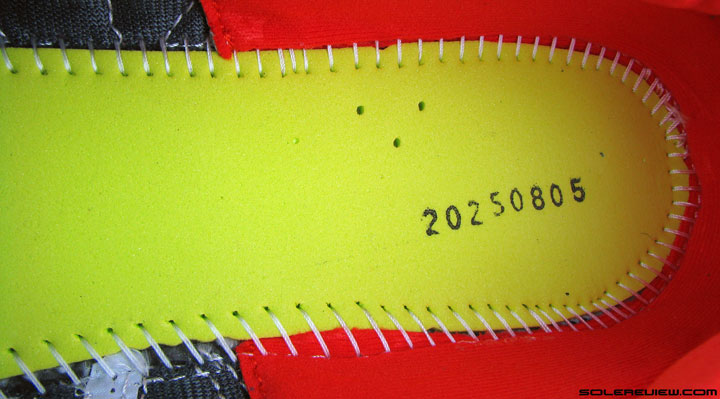
The foam lasting below the insole makes the first layer of cushioning softer, noticeable on walking or easy running.

The insole at close quarters. An open celled foam structure which lends the sockliner a soft cushioning quality.
The Inspire 12’s ride experience versus the Inspire 11 can be broken down in three parts. The first part relates to the change in the lasting material below the insole.
By switching to foam instead of fabric, the first layer of cushioning becomes softer. This is something you’ll feel when you’re wearing the shoe for the first time, or walk around in them. There’s more squish just under the foot, a sense of increased foam layering. Let’s leave this here for a moment.
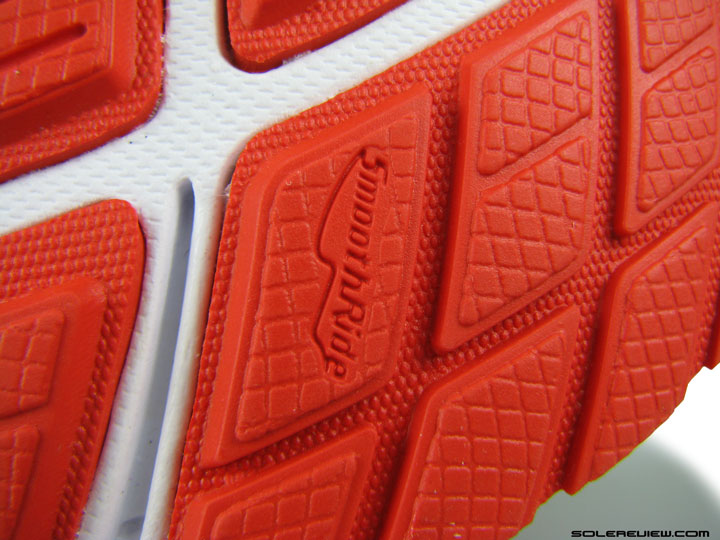
Thicker and larger slabs of blown foam when combined with flex groove rationing makes the forefoot firmer, not softer.
The second part of the ride experience concerns the forefoot. One might think that a thicker blown rubber outsole will increase cushioning softness, but the reverse ends up being true here. Surprisingly, the Inspire 12 is actually firmer than the Inspire 11. And why?


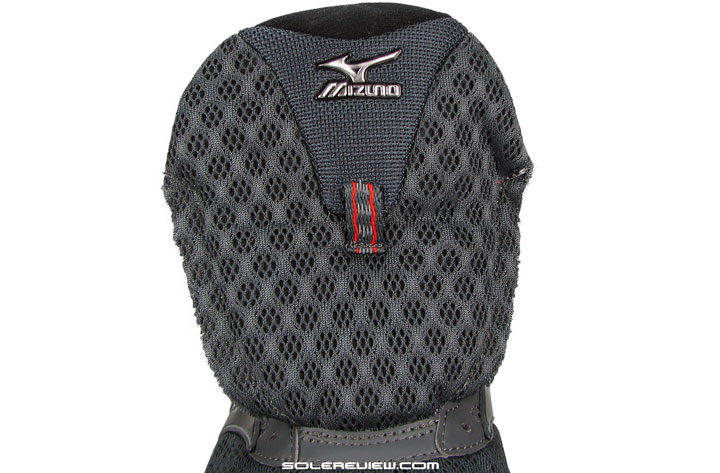

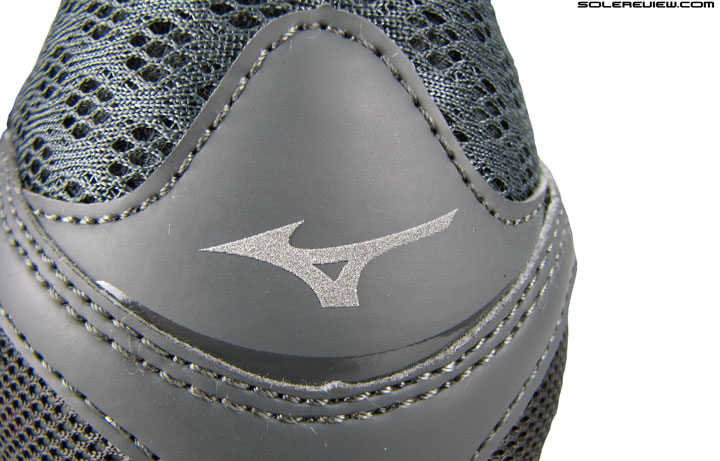



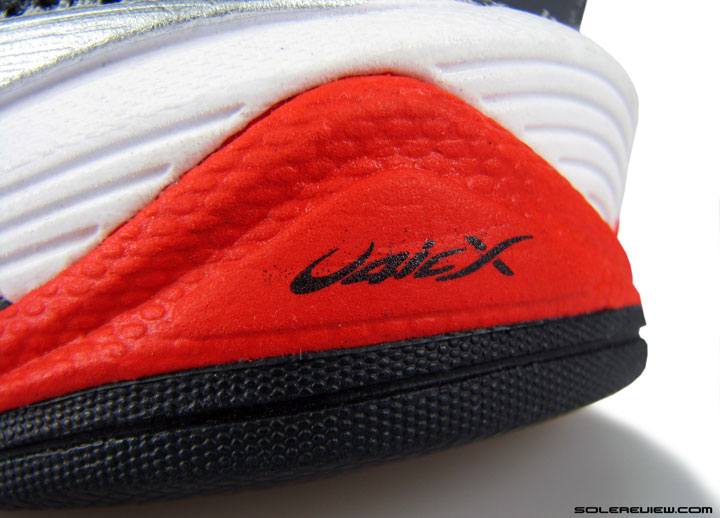
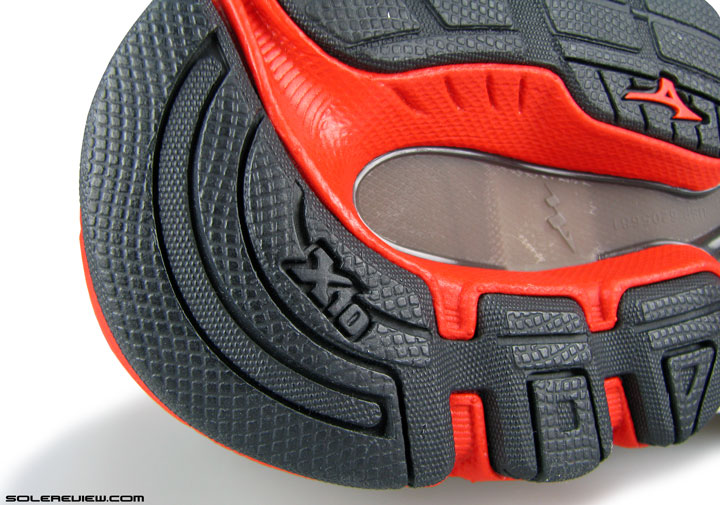
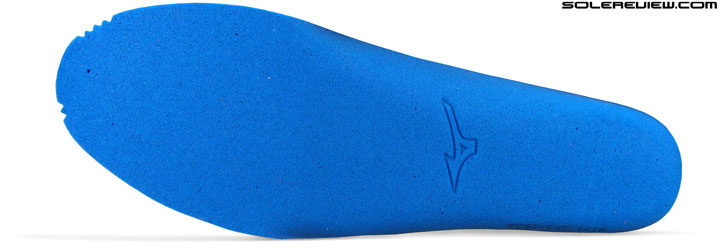
18 comments
“All in all, the Inspire 12 is a curious update full of surprises. It is still supportive in Mizuno’s own unique way, but no more than the ‘neutral’ Wave Rider 19, which oddly turns out to be a firmer shoe”
Agree. I have worn the WR 13, 15, and 17 and once tried the Inspire. I actually preferred the cushion of the Inspire, but not the stability features.
All of Mizuno’s changes seem “curious.” It seems they change for the sake of change. The WR13 was preferred by many and never has been the same.
Personal thought, it seems Mizuno running shoes are not the focus of the company. Their golf, baseball, and other sports seem to be the foundation for the company. The previous year’s models can be found at very, very cheap prices (possibly indicating a lack of sales) as compared to Brooks, Asics, and Nike.
Perhaps this is the reason why Mizuno is making their shoes softer? To appeal to a mainstream audience?
Perhaps.
Mizuno’s lack of popularity is indicative of the minimal replies to this review compared to other reviews.
Can’t help but feel that this version of the Inspire is not true to this shoe’s heritage. All models since the 6 (yes, I’ve used them for a long time) have had the 11’s “snappy” responsive ride. WHen I tried the 12 at my local shop it felt too similar to the Paradox. consequently I bought a pair of 11s on run-out. Will try to source some more of these, as I didn’t like the 12’s bulky feel.
Thanks for the feedback – have no idea at all about Inspires before V11.
hey i had ankle operation (ATFL) and used puma FAAs1000 after that which seemed quite comfy. then i started using the reebok ziglite. both shoes on treadmill or soft ground and nothing more than 5k…however i started developing shin pain i think because of the ziglite. even though the ankle is fine now the knee of the other leg plus the shins trouble me… i am looking foe anew shoe to gradually build up for a half marathon….have read so many reviews that i am confused…any suggestions would be greatly appreiated..
Sorry Rudra, we cannot help here – injuries might or might not be caused because of footwear. It is best to see a physio for ways to treat your pain.
I’ve run in the Inspire 8, 9 and 11 and loved them all. I recently tried the 12 on in a store and felt that my heel was slipping. I compared the 12 side-by-side with my 11 and they definitely looked about a half size larger. Just to be sure about the heel slippage issue, I also tried a half size smaller and still felt that my heel was slipping. I know your review indicated that the heel area hasn’t changed from the 11. Looking at pictures of the 12 and the 11, the last eyelet in the 12 seems farther away from the heel than in the 11. Could that be the reason why my heel feels like it’s slipping? I also tried on the Guide 19 at the store and felt that my heel was slipping, albeit not as much as the Inspire 12. Bottom line is I didn’t feel comfortable in the Inspire 12’s and I don’t know what to do now. Years ago, I ran in Asics GT-2000s, but they seemed slow once I discovered the Inspire series. I also tried Sacuony Hurricanes but they felt like concrete blocks on my feet.
Try barefoot :)
It is possible that the softer insole is causing the foot to sink in further, creating the sensation of slippage.
Have you tried the Sequence 8 Boost?
hi solerunner, i dont know where else i should ask so ill just wrote it here:
could you write more review about trail run shoe, or just any shoe more outdoor oriented (like hiking shoe perhjaps). most of the review out there is very subjective and didn’t have actual number/ material photos to back em up. all i see is people sayin “this trail runners grip more than other brand”, or “the material seems more durable to rocky condition”. i just wish i had trail shoe review which actually compare the shoe objectively, like what you do on running shoe. i dont know how big the market potential though. thanks for listening
Hi!
Thank you for the feedback! We currently don’t write outdoor footwear reviews because of resource constraints, but once we do, we’ll be happy to get into trail running shoe reviews!
Thanks for the great reviews! I tried Odyssey but it was a disaster for me. One source that has great info on running shoes is this one https://www.youtube.com/watch?v=tQBKVeA_qrI, they are quite thorough and combined with your analysis, this is a great help to all of us. They suggest Saucony Ride 7, like you did, which I might try.
Thanks for the video!
Great job with the site, thanks for all the reviews!!!
I’m looking for a bit of advice:
I’ve been running with Lunar Eclipse (v3 and V4 for the last few years). It’s a shoe that I liked and felt comfortable with, even though I’ve always suffered from shin splints. I’ve managed to keep them at bay by using a MacDavid calf sleeve… otherwise I would start getting pain in my shins after 3-4 runs without using them.
Recently I had to shop again for new shoes, but the Lunar Eclipse are gone. So I tried several pairs (including the Nike Air Zoom Odyssey) and ultimately settled for this Inspire 12, they felt the best at the store.
After two months of use I’m developing ITBS and also for some reason my toes are hurting at the tip (surprising since one of the reasons I chose them was the roomy toe box). I had never had any of these issues before, so I’m blaming them on the Inspire 12… even though I’ve run my first marathon during this time.
So now after the marathon I’m slowly getting back to running and working hard on my running form in the hopes of getting rid of my shin splints once and for all (I’d like to run without the calf sleeves!). In the process I want to go a bit more minimalistic with my shoes to see if that’s also a factor that will help my form and running economy.
Any recommendations for a new pair of shoes? I get the Inspire 12 at Roadrunner so I can still exchange them for a new pair. Thanks so much in advance!
How much of running were you doing before the marathon? Besides the shoes, overtraining could potentially be an issue.
That said, if you’re looking for a relatively minimal shoe, then the New Balance 1500 V1 or V2 is worth a try.
Thanks!
I had been training Ning for the marathon for a while, and I got the Mizuno’s just as I was about to start the tapering, like about 3 weeks before the race. They felt good at first, but after a few runs I got pain in the top of my feet, so I had to change the traditional lacing which helped… But the more I run in them the more I noticed they weren’t right for me… And then those issues appeared.
I’ll look into the NB 1500… I was also thinking of the Saucony Kinvara or Ashoka Clifton as potentially good transition shoes… Any thoughts on those? And maybe a Nike equivalent if you can think of one? Thanks!!!
Apart from the 1500, you could try the Nike LunarTempo 2. Yes, the Kinvara is also worth considering.
The Clifton? Not sure. You mentioned minimalist, but these shoes are anything but.
Comments are closed.